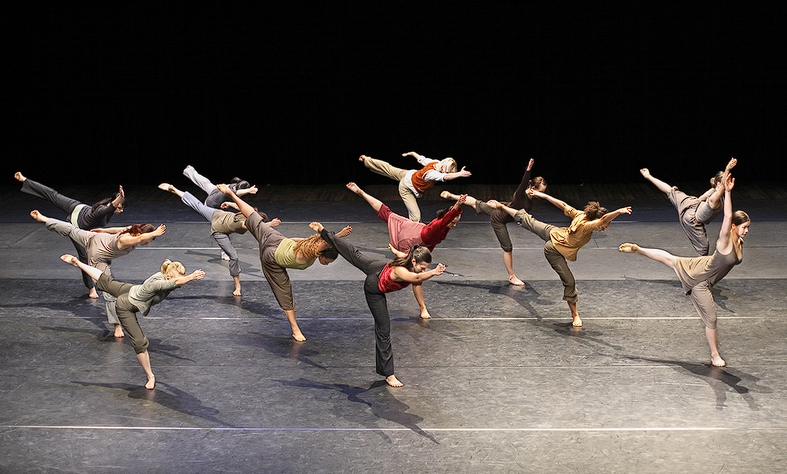Modern dans, geleneksel dans formlarının dışında kalan, genellikle serbest, yaratıcı ve deneysel bir yaklaşıma dayanan bir dans türüdür. Bu dans türü, 20. yüzyılın başlarına dayanan bir hareket olarak ortaya çıkmış ve geleneksel bale tekniklerine karşı bir tepki olarak gelişmiştir. Modern dans, dansçılara daha fazla ifade özgürlüğü sunar ve bedenlerini duygularını, düşüncelerini ve hikayelerini anlatmak için kullanmalarına olanak tanır.
Modern dansın özellikleri
- İfade Özgürlüğü: Modern dansçılar, duygularını ve düşüncelerini serbestçe ifade etmek için bedenlerini kullanır. Bu dans türü, bireysel ifadeyi teşvik eder ve dansçılara daha fazla özgürlük sunar.
- Doğal Hareketler: Modern dans, vücudun doğal hareketlerini vurgular ve geleneksel bale hareketlerinin aksine daha organik ve serbest bir stile sahiptir.
- Zemin Çalışması: Modern dans, dansçıların zeminde çalışmasını içerebilir. Dansçılar, yerde oturabilir, sürünebilir veya yuvarlanabilirler.
- Duygusal Derinlik: Modern dans sıklıkla duygusal derinlik taşır ve kişisel deneyimlere veya toplumsal konulara odaklanabilir.
- İşbirliği: Modern dans genellikle gruplar halinde yapılır ve dansçılar birbirleriyle etkileşimde bulunarak kolektif bir ifade oluştururlar.
Modern dansın tarihi, birçok önemli figürün katkılarıyla şekillenmiştir. Isadora Duncan, Martha Graham, Merce Cunningham ve José Limón gibi önemli dansçılar ve koreograflar, modern dansın gelişimine büyük katkılarda bulunmuşlardır. Bu sanatçılar, modern dansın temellerini atmış ve bu dans türünü farklı teknikler ve tarzlarla zenginleştirmiştir.
Modern dansın evrimi devam etmektedir ve zaman içinde tanımı değişebilir. Bu dans türü, sanatın ve bedenin birleştiği yaratıcı bir ifade biçimi olarak kabul edilir ve dansçılar için sonsuz bir keşif ve ifade alanı sunar.
Modern dance is a style of dance that emerged in the early 20th century as a reaction against the rigid structure and formalism of classical ballet. It is characterized by a departure from the traditional techniques and movements of ballet and an emphasis on individual expression, creativity, and freedom of movement. Modern dance has evolved into a diverse and dynamic art form, with various techniques and styles developed by influential choreographers and dancers over the years.
Key characteristics and features of modern dance include:
- Freedom of Expression: Modern dance prioritizes the dancer’s personal expression and emotional connection to the movement. Dancers are encouraged to convey their feelings, thoughts, and ideas through their bodies.
- Natural Movements: Unlike ballet, which often involves highly stylized and codified movements, modern dance often draws from natural and everyday movements. Dancers explore a wide range of gestures, floor work, and movements that are more organic and less constrained.
- Use of Space: Modern dance frequently explores the use of space in creative ways, allowing for movements that extend beyond the traditional stage area. Dancers may use the entire performance space, including the floor, walls, and even the audience area.
- Emphasis on Breath and Flow: Modern dancers often focus on the breath as a central element of their movement. Breath is used to connect movements and create a sense of flow and continuity.
- Contemporary Themes: Modern dance often addresses contemporary social, political, and emotional themes. Choreographers may use dance to comment on societal issues or to explore personal experiences and relationships.
- Experimentation: Modern dance is known for its experimental nature. Choreographers and dancers are encouraged to push boundaries, explore new movements, and challenge traditional dance conventions.
Prominent figures in the development of modern dance include Isadora Duncan, Martha Graham, Merce Cunningham, José Limón, and Alvin Ailey, among others. Each of these artists contributed to the evolution of modern dance through their innovative choreography and unique approaches to movement.
Modern dance continues to evolve and adapt, incorporating elements from other dance styles and disciplines. It remains a vibrant and influential form of artistic expression that values creativity, individuality, and the exploration of the human body’s potential for movement and expression.

